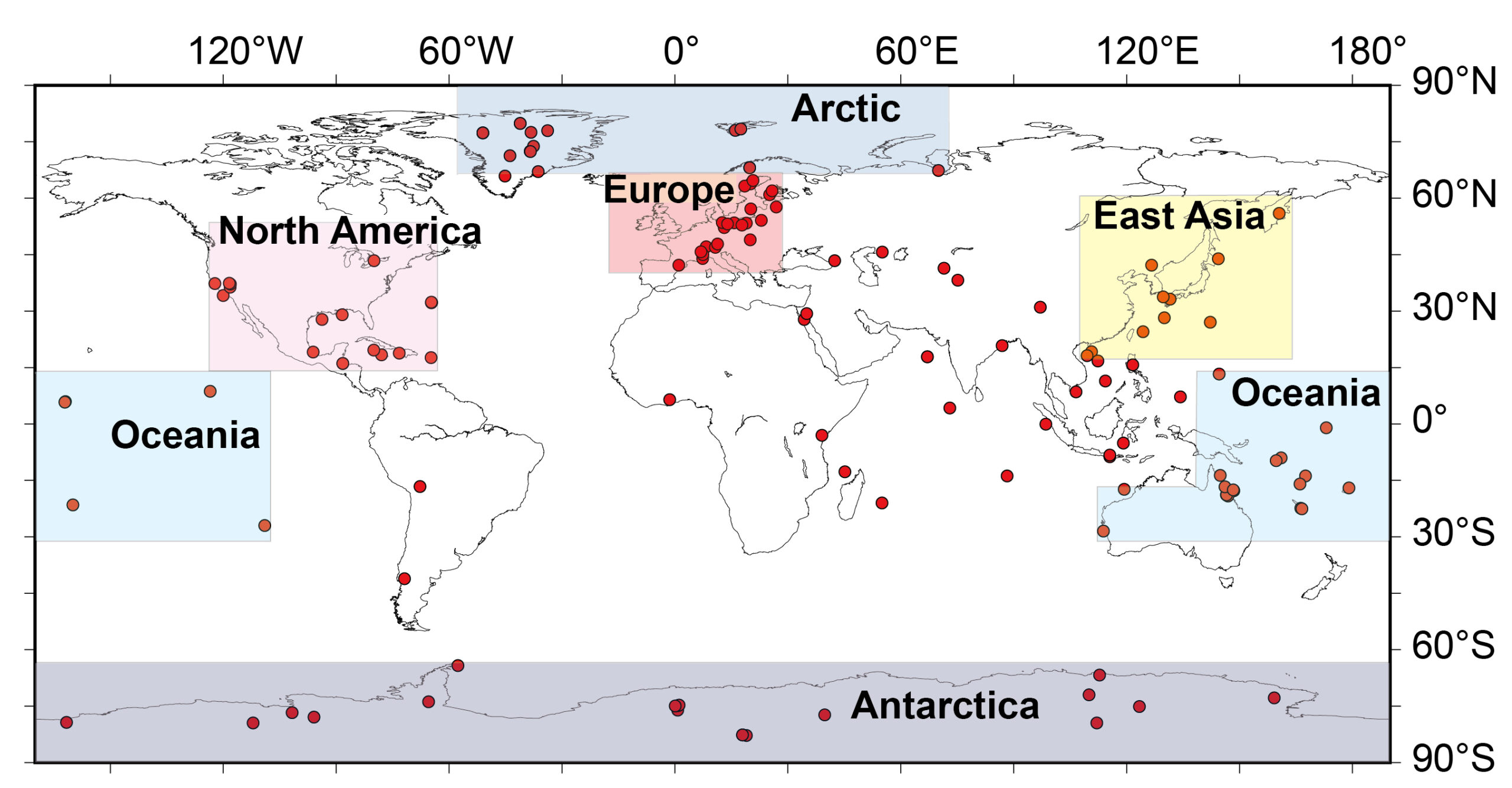Global Anthropogenic Fingerprints Suggest the Anthropocene Began in the 1950s
An unprecedented rapid increase in anthropogenic fingerprints around 1952 in the global strata reflects the point in time when humanity began to overwhelm the Earth system
When did human activities begin to fundamentally change the Earth system? We investigated stratigraphic records worldwide over the past 7,700 years to extract anthropogenic fingerprints. We found a global and unprecedented rapid increase in diverse anthropogenic signals reflecting advanced technological revolutions from 1952 CE. This finding suggests that a human-induced fundamental change in the Earth system occurred around 1952, contributing to future discussion on the definition of the Anthropocene in geological communities.
Based on stratigraphic records, there have been attempts to identify when the first fundamental changes brought about by humans appeared in the Earth system, but researchers have been divided on the timing, making it one of the unresolved issues in defining the Anthropocene. It is known that humanity had already extensively altered terrestrial environments 11,700 years ago, at the beginning of the Holocene. It has since had significant impact capable of altering the climate system, including the development of agricultural societies 8,000 years ago, forest recovery following the arrival of Europeans in the “New World” from 1492 to around 1800, and the Industrial Revolution in the 18th century. However, the onset of human influence during each of these periods occurred at different times and was not simultaneous on a global scale. Even for the proposed onset of the Anthropocene around the 1950s, the effects of anthropogenic climate change appeared with a lag of about 20 years. A mass extinction event, which has traditionally been used as a criterion for recognizing a geological boundary, would take several hundred years, and the timing of these fundamental changes in the Earth system varies among indicators. Thus, the absence of a definitive stratigraphic marker makes it a challenging task to identify a specific moment when humanity began to dominate the Earth system.
In this study, we proposed using the rapid increase in the number of anthropogenic fingerprints as a stratigraphic marker to identify a potential tipping point in the Earth system. These fingerprints were detected based on several criteria: (1) the first occurrence of new anthropogenic substances and species, such as PCBs and artificial radioactive nuclides, which had not existed on Earth before, (2) the point at which biological and geochemical indicators first exceeded the range of natural variability prior to the Industrial Revolution, and (3) significant shifts in biological communities (Figure1). The global rapid increase in the number of these anthropogenic fingerprints could serve as a powerful marker of the point at which human pressure rapidly and fundamentally altered countless diverse physical, chemical, and biological processes and cycles, becoming a dominant force in the Earth system.
In this study, we detected 748 anthropogenic fingerprints from 338 environmental and biological records obtained from 137 locations worldwide (Figure2), including annually laminated lake and marine sediments, corals, ice cores, and tree rings. From the cumulative record of anthropogenic fingerprints, we found that an unprecedented rapid increase in diverse anthropogenic fingerprints began in 1952 ± 3 CE. Particularly between 1953 and 1958, a nearly simultaneous surge in anthropogenic fingerprints was observed across all regions, including Antarctica, the Arctic, East Asia, Europe, North America, Oceania (Figure3). This synchronous increase reflects the point at which human influence brought about rapid changes to various natural processes and cycles, becoming a geological and planetary force capable of inscribing abundant and diverse anthropogenic fingerprints into strata worldwide.
Following this period, long-term and profound changes to the Earth system began on a planetary scale, including the onset of increasing and decreasing trends (Figure1) in various indicators such as microplastics, stable isotope ratios, and methane gas concentrations, the acceleration of these changes, climate change deviating from natural Holocene variability, significant alterations to the nitrogen cycle, and the invasion and settlement of non-native species globally. Therefore, the unprecedented rapid increase in anthropogenic fingerprints worldwide suggests that human activities began to overwhelm the Earth system around 1952.
The fact that human influence on the Earth system extends back more than ten thousand years and that this influence is significantly trans-temporal has challenged the validity of the Anthropocene as a chronostratigraphic unit proposed by the Anthropocene Working Group, contributing to the denial of the Anthropocene as a formal geological epoch by the International Union of Geological Sciences. However, setting a boundary based on the point at which the rapid increase in anthropogenic fingerprints reached a global scale may be the only approach to resolving the issue of cumulative human influence on the Earth system and its trans-temporal nature, which has persisted since the beginning of the Holocene or even earlier. Such a clear date based on stratigraphy of anthropogenic fingerprints is expected to provide a crucial basis for future discussions on defining the beginning of the Anthropocene.
Reference URL: https://www.pnas.org/doi/suppl/10.1073/pnas.2313098121
Bibliographic Information
Kuwae, M., Yokoyama, Y., Tims, S., Froehlich, M., Fifield, L. K., Aze, T., Tsugeki, N., Doi, H., and Saito, Y. (2024)
Toward defining the Anthropocene onset using a rapid increase in anthropogenic fingerprints in global geological archives.
PNAS 121, e2313098121.
https://doi.org/10.1073/pnas.2313098121, September 23, 2024
Fundings
- Japan Society for the Promotion of Science (JSPS) KAKENHI Grant Number 20H00193, 21H01170, and 21H05058
- The Moonshot Research and Development Program, JPNP18016 (20001823- 0)
Media
-

【Figure1】Various environmental changes and the detection timing of anthropogenic fingerprints in stratigraphic records
The arrows indicate the timing of the first detection of anthropogenic fingerprints (light blue) and the timing of abrupt changes (red).
credit : Ehime University
Usage Restriction : Please get copyright permission -

【Figure2】Locations of stratigraphic records obtained from 137 sites worldwide (red circles)
Shaded areas represent the extent of regional datasets.
credit : Ehime University
Usage Restriction : Please get copyright permission -

【Figure3】Example of geological recording media (Beppu Bay marine sediments) and the simultaneous rapid increase in anthropogenic fingerprints worldwide
Gray shading indicates the period when anthropogenic fingerprints began a rapid increase globally (1952 ± 3 CE).
Pink shading indicates the period of the most significant increase in fingerprints in each region (1953–1958 CE).credit : Ehime University
Usage Restriction : Please get copyright permission
Contact Person
Name : Michinobu Kuwae
Phone : +81-89-927-9654
E-mail : kuwae.michinobu.mc@ehime-u.ac.jp
Affiliation : Center for Marine Environmental Studies, Ehime University

